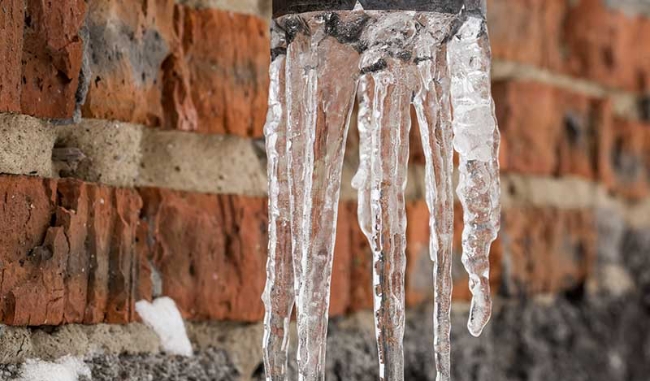How do you feel in regards to Winter Plumbing Precautions: Preventing Frozen Pipes?

Winter can ruin your plumbing, especially by freezing pipes. Right here's just how to avoid it from taking place and what to do if it does.
Introduction
As temperature levels decline, the risk of icy pipelines increases, possibly bring about expensive repair services and water damages. Understanding how to avoid frozen pipes is vital for homeowners in cold climates.
Understanding Frozen Pipes
What creates pipes to ice up?
Pipelines ice up when subjected to temperatures below 32 ° F (0 ° C) for extended durations. As water inside the pipelines ices up, it broadens, putting pressure on the pipe wall surfaces and potentially triggering them to break.
Risks and damages
Frozen pipes can result in supply of water disruptions, residential property damages, and costly repairs. Ruptured pipes can flooding homes and cause considerable structural damages.
Signs of Frozen Water Lines
Identifying icy pipelines early can prevent them from rupturing.
Just how to recognize frozen pipes
Try to find decreased water flow from faucets, uncommon smells or noises from pipes, and visible frost on subjected pipelines.
Avoidance Tips
Shielding at risk pipes
Wrap pipelines in insulation sleeves or use warmth tape to protect them from freezing temperatures. Focus on pipes in unheated or external locations of the home.
Home heating methods
Keep interior rooms adequately warmed, specifically areas with plumbing. Open up cupboard doors to enable warm air to distribute around pipes under sinks.
Protecting Outside Plumbing
Yard hose pipes and exterior taps
Disconnect and drain garden tubes prior to wintertime. Install frost-proof faucets or cover outdoor faucets with protected caps.
What to Do If Your Pipelines Freeze
Immediate actions to take
If you believe icy pipelines, maintain taps available to alleviate pressure as the ice melts. Utilize a hairdryer or towels taken in warm water to thaw pipelines slowly.
Long-Term Solutions
Structural modifications
Consider rerouting pipelines far from exterior walls or unheated areas. Add additional insulation to attics, basements, and crawl spaces.
Updating insulation
Purchase premium insulation for pipelines, attic rooms, and walls. Proper insulation assists maintain consistent temperatures and lowers the danger of icy pipes.
Verdict
Protecting against icy pipes calls for aggressive procedures and quick actions. By comprehending the causes, indications, and safety nets, homeowners can secure their pipes throughout cold weather.
6 Proven Ways to Prevent Frozen Pipes and Protect Your Home
Disconnect and Drain Garden Hoses
Before winter arrives, start by disconnecting your garden hoses and draining any remaining water. Close the shut-off valves that supply outdoor hose bibs and leave the outdoor faucet open to allow any residual water to drain. For extra protection, consider using faucet covers throughout the colder months. It’s also important to drain water from any sprinkler supply lines following the manufacturer’s directions.
Insulate Exposed Pipes
Insulating your pipes is an effective way to prevent freezing. Pipe insulation is readily available at home improvement stores and is relatively inexpensive. Pay close attention to pipes in unheated areas such as the attic, basement, crawl spaces, or garage. Apply foam insulation generously to create a buffer against the cold. You can also wrap your pipes in heat tape or thermostat-controlled heat cables for added warmth.
Seal Air Leaks
Inspect your home for any cracks or openings that could let in cold air. Seal any holes around the piping in interior or exterior walls, as well as the sill plates where your home rests on its foundation. Additionally, make sure to keep your garage door closed unless you’re entering or exiting. Leaving it open creates a significant air leak that can lead to frozen pipes.
Allow Warm Air Circulation
During cold snaps, it’s essential to allow warm air to circulate evenly throughout your home. Leave interior doors ajar to promote better airflow. Open kitchen and bathroom cabinets to help distribute heat consistently around the rooms. If you have small children or pets, be sure to remove any household chemicals or potentially harmful cleaners from open cabinets for safety.
Let Faucets Drip
A small trickle of water can make a big difference in preventing ice formation inside your pipes. When temperatures drop significantly, start a drip of water from all faucets served by exposed pipes. This continuous flow helps prevent the water from freezing. Additionally, running a few faucets slightly can relieve pressure inside the pipes, reducing the chances of a rupture if the water inside does freeze.
https://choateshvac.com/6-proven-ways-to-prevent-frozen-pipes-and-protect-your-home/

Hopefully you enjoyed reading our excerpt about How to Prevent Your Pipes From Freezing. Thank you so much for finding the time to read through our piece. Kindly take a moment to promote this page if you liked it. Thank you so much for going through it.
Book A Service Call